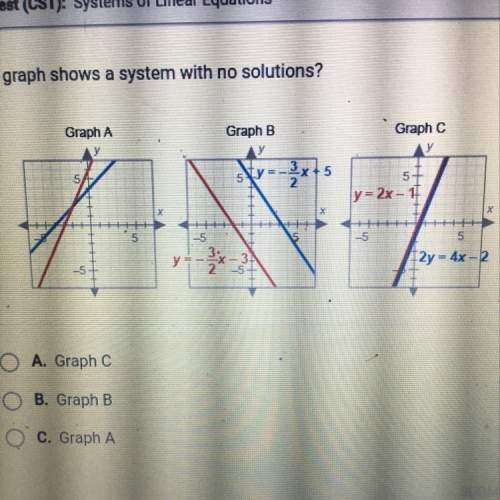
Mathematics, 01.09.2021 18:50 shaylawaldo11
When performing a transformation on a set of data, how do you determine if the transformation is successful? (2 points)
If r-squared for the transformation is greater than r-squared for the original regression, the transformation is successful.
If r-squared for the transformation is less than r-squared for the original regression, the transformation is successful.
If r for the transformation is less than r for the original regression, the transformation is successful.
If r for the transformation is greater than r for the original regression, the transformation is successful.
If the intercept for the transformation is greater than the intercept for the original regression, the transformation was successful.

Answers: 3


Other questions on the subject: Mathematics

Mathematics, 21.06.2019 16:30, chintiffany4779
The perimeter of a triangle is 69 cm. the first is 5 cm shorter than the second side. the third side is twice as long the first side. find the length of each side
Answers: 1

Mathematics, 21.06.2019 17:00, SillyEve
In tossing one coin 10 times, what are your chances for tossing a head? a tail? 2. in tossing one coin 100 times, what are your chances for tossing a head? a tail? 3. in tossing one coin 200 times, what are your chances for tossing a head? a tail? deviation = ((absolute value of the difference between expected heads and observed heads) + (absolute value of the difference between expected tails and observed tails)) divided by total number of tosses. this value should always be positive. 4. what is the deviation for 10 tosses? 5. what is the deviation for the 100 tosses? 6. what is the deviation for 200 tosses? 7. how does increasing the total number of coin tosses from 10 to 100 affect the deviation? 8. how does increasing the total number of tosses from 100 to 200 affect the deviation? 9. what two important probability principles were established in this exercise? 10. the percent of occurrence is the obtained results divided by the total tosses and multiplied by 100%. toss the coins 100 times and record your results. calculate the percent occurrence for each combination. percent head-head occurrence: percent tail-tail occurrence: percent head-tail occurrence:
Answers: 3

Mathematics, 21.06.2019 18:30, daidai123
Players on the school soccer team are selling candles to raise money for an upcoming trip. each player has 24 candles to sell. if a player sells 4 candles a profit of$30 is made. if he sells 12 candles a profit of $70 is made. determine an equation to model his situation?
Answers: 3

Mathematics, 21.06.2019 18:30, Jenniferwolf
Ametal rod needs to be 9 feet and 5.5 inches in length. the sections of the poles being used are each 1 foot and 10.5 inches long. how many 1ft 10.5in sections would be needed to complete the 9ft 5.5in metal rod? and how many inches of material will be left?
Answers: 1
You know the right answer?
When performing a transformation on a set of data, how do you determine if the transformation is suc...
Questions in other subjects:


English, 24.04.2020 19:34











